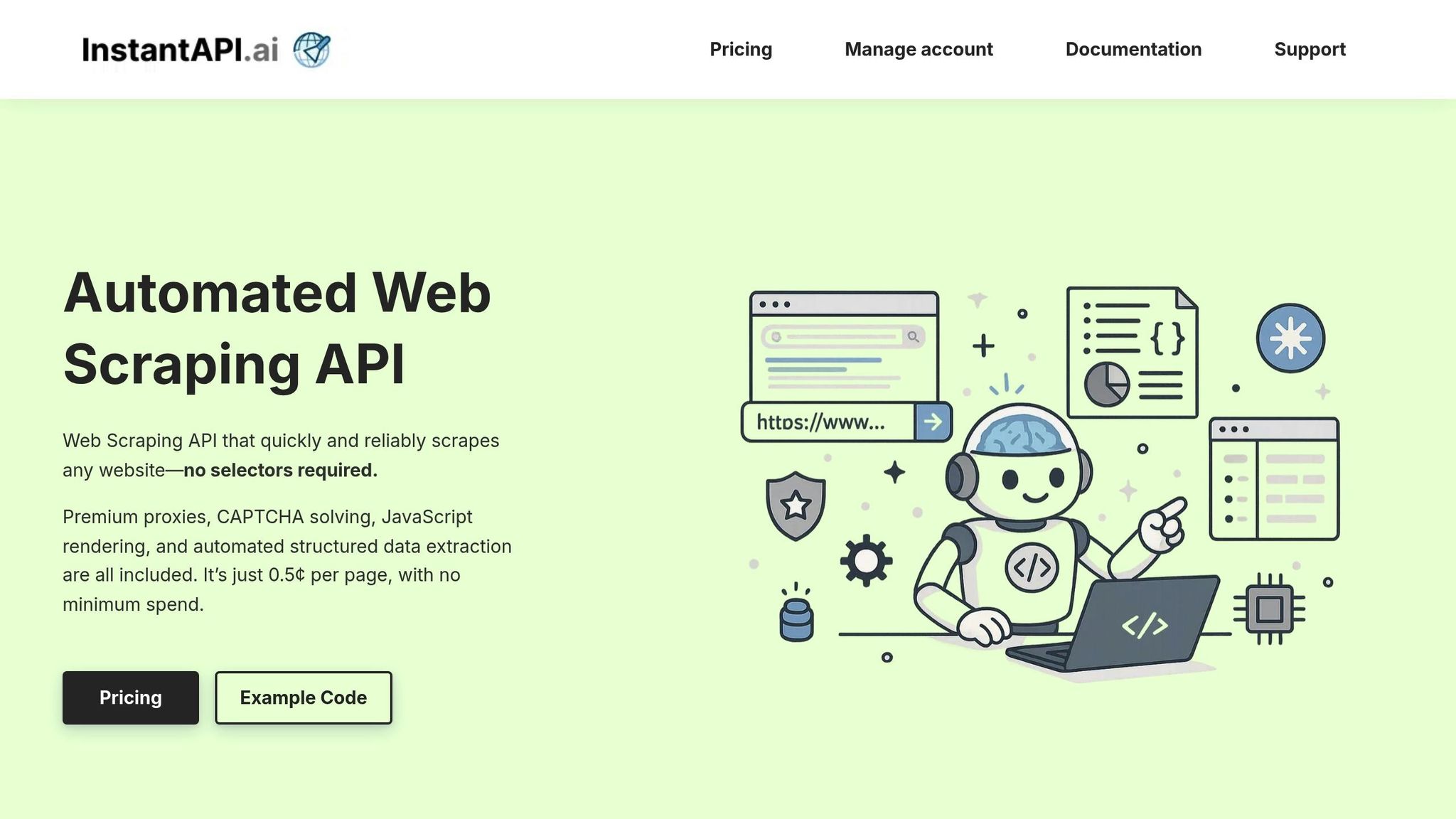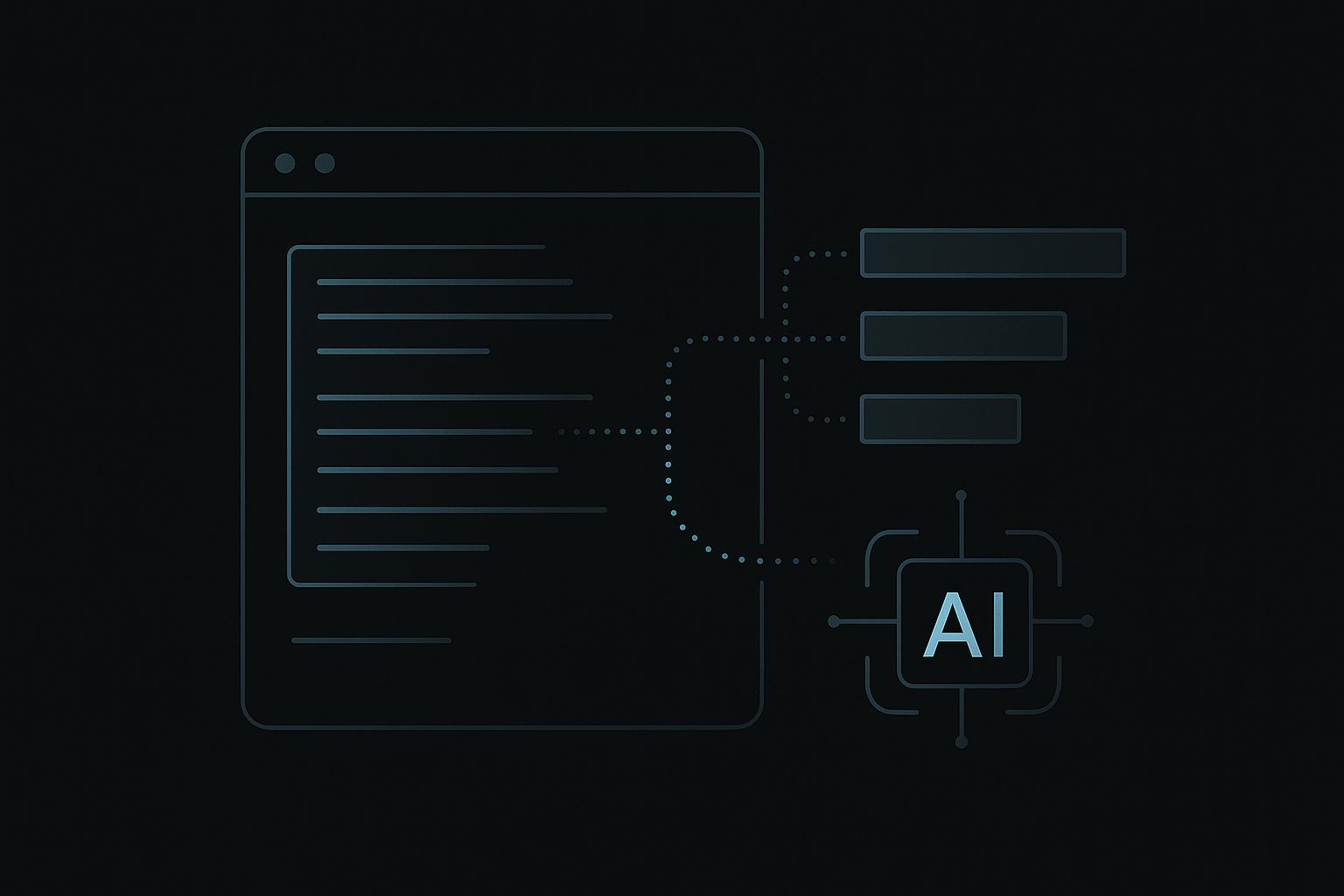Web scraping is a powerful way to gather public data from government websites for analysis and decision-making. It helps automate repetitive tasks, track updates, and organize information into structured formats like dates (MM/DD/YYYY) and dollar amounts ($). Key uses include monitoring legislation, tracking public health, and supporting urban planning. Popular tools like InstantAPI.ai simplify the process with features like proxy management, JavaScript rendering, and CAPTCHA-solving.
Key Points:
- Applications: Law enforcement, disaster response, economic monitoring.
- Data Sources: Platforms like Data.gov and USA.gov.
- Best Practices: Respect legal frameworks (e.g., CFAA), follow ethical guidelines, and use robots.txt files.
- Legal Note: Public data scraping is generally allowed (LinkedIn v. HiQ Labs, 2021).
Web scraping is essential for modern data collection, but it requires transparency, compliance with laws, and ethical practices.
Scraping and automating outreach for Government Contracting
Government and Public Data Sources
The U.S. government offers several digital repositories that act as primary sources for public data. These platforms provide a wealth of information that can be systematically retrieved using web scraping methods.
Main Data Sources
Data.gov serves as the main hub for open data from the U.S. government. Since its launch in May 2009 with just 47 datasets, it has grown to host over 313,000 datasets from more than 100 federal organizations, attracting over one million pageviews each month[1].
Key platforms include:
- Data.gov: A central repository for federal datasets
- USA.gov: A comprehensive guide to government services and resources
- Websites of federal agencies (those ending in .gov or .mil)
"Data.gov aims to free government data to inform decisions, drive innovation, and strengthen transparency."
When scraping data from government websites, ensure the source is legitimate by checking for:
- Secure HTTPS connections
- Official domain extensions like .gov or .mil
Next, familiarize yourself with common data formats to simplify the scraping and integration process.
Web Scraping Tools and Methods
Web Scraping Software Options
When extracting structured data from government portals using formats like MM/DD/YYYY, dollar amounts, and ZIP codes, look for tools that support:
- Handling dynamic content
- Formatting structured data outputs
- Managing proxies automatically
InstantAPI.ai combines all these features into a single API solution.
Features of InstantAPI.ai

InstantAPI.ai is tailored for extracting government data efficiently. It offers global geotargeting with access to over 65 million rotating IPs, ensuring smooth access to public websites across various regions[1].
Some of its key features include:
- JavaScript rendering powered by headless Chromium
- Automatic rotation of premium proxies
- Customizable schema-based data output
- Integrated CAPTCHA-solving capabilities
Steps for Basic Scraping
- Set up headers and authentication details
- Analyze the page structure to identify target elements
- Create and apply a schema for structured output
- Check and validate formats for dates, currency, state abbreviations, and ZIP codes
[1] InstantAPI.ai feature set – global geotargeting with 65+ million rotating IPs.
sbb-itb-f2fbbd7
Data Tracking Methods
Once you've set up basic scraping, you can take it a step further to track updates and ensure your dataset stays accurate and up-to-date.
Legislative Data Monitoring
Keep tabs on legislative changes by regularly checking government websites for updates on policies and bills. Here’s how:
- Configure scrapers to spot structural changes on bill status pages.
- Create alerts for specific keywords or bill numbers to stay informed.
- Save historical page versions so you can trace amendments over time.
Tracking Public Statistics
Pull structured data from trusted sources like:
- Demographic stats from the U.S. Census Bureau.
- Economic data from the Bureau of Labor Statistics.
- Public health numbers from agency dashboards.
- Air quality and other metrics from environmental databases.
InstantAPI.ai can help streamline this process by offering an API that extracts and organizes data fields from various sources.
Managing Scraping Tasks
To keep your scraping process efficient, focus on scheduling, storage, and analytics:
- Scheduling: Align scrape schedules with source update cycles - daily for legislative updates, monthly for economic data, and quarterly for census reports.
- Data Storage: Validate incoming data, version-control updates, archive raw files, and ensure formats align with U.S. standards (e.g., currency, ZIP codes).
- Analytics: Export cleaned data to visualization tools, track year-over-year trends, and set alerts for major changes.
U.S. Legal Requirements
When it comes to gathering public data, understanding the legal landscape is essential. The courts clarified in LinkedIn v. HiQ Labs (9th Cir. 2021) that accessing publicly available pages does not violate the Computer Fraud and Abuse Act (CFAA)[1].
U.S. Laws and Regulations
Several legal frameworks apply to web scraping:
- CFAA: Only access public pages to stay compliant.
- Copyright laws: Ensure usage falls under fair-use guidelines.
- CCPA: Protect the personal data of California residents.
- GDPR: Obtain proper consent and be transparent about data use.
Best Practices
To stay on the right side of the law, follow these practices:
- Respect website Terms of Service (ToS) and robots.txt files.
- Limit the frequency of requests to avoid overwhelming servers.
- Use content within fair-use boundaries.
- Regularly review obligations under CFAA, CCPA, and GDPR.
- Consult legal experts when dealing with sensitive or ambiguous data.
Always ensure your scraping processes align with U.S. legal and ethical standards.
[1] LinkedIn v. HiQ Labs, 983 F.3d 961 (9th Cir. 2021).
Conclusion
Web scraping provides effective ways to monitor U.S. government and public data. It's crucial to follow U.S. legal and ethical standards to ensure compliance and maintain public trust.
To use web scraping responsibly and get the most out of it, organizations should:
- Be clear and open about their scraping activities
- Protect and anonymize the data they collect
- Stay updated on privacy laws like CCPA and GDPR


